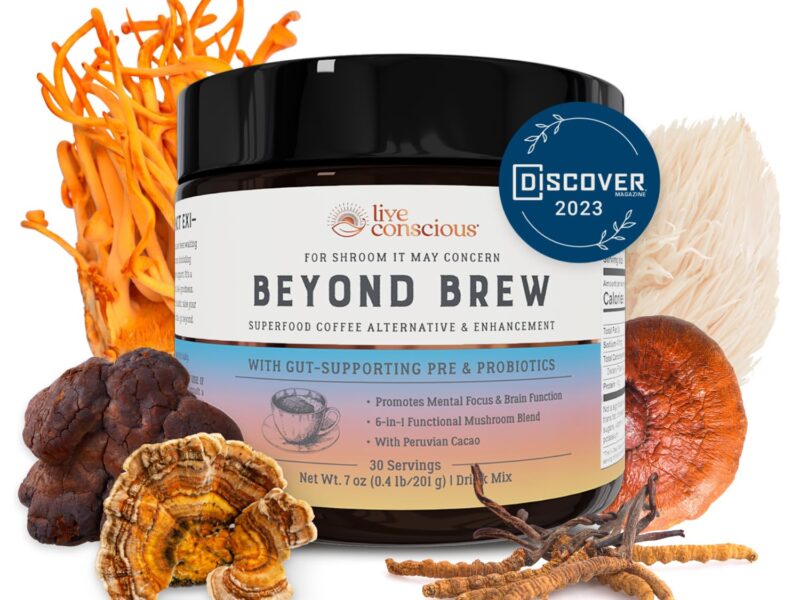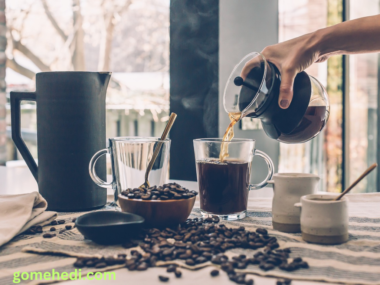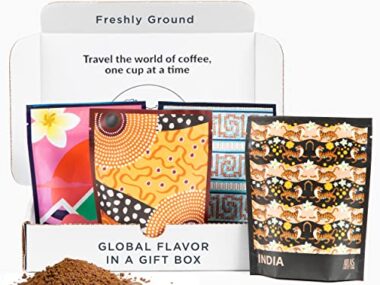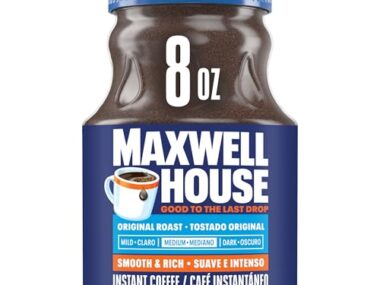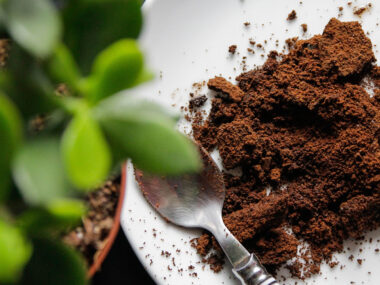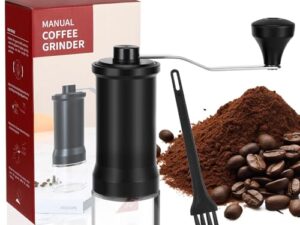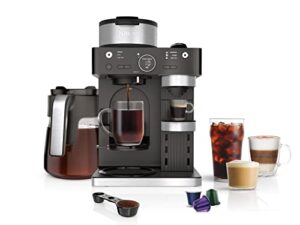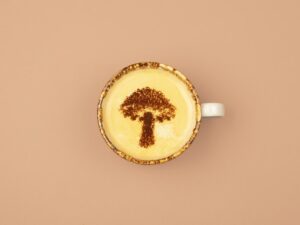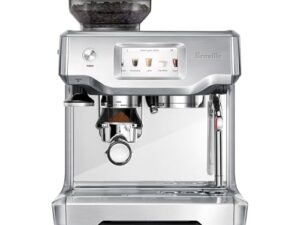Decaf coffee has the least caffeine. It’s often chosen by those who want to cut down on their caffeine intake without giving up coffee entirely.
Many people love the taste and ritual of coffee. But not everyone wants the caffeine. Some people are sensitive to it, while others want to enjoy their favorite drink later in the day without it affecting their sleep. That’s where low-caffeine coffee options come in.
Whether you’re trying to reduce your caffeine consumption for health reasons, or you just want to enjoy a cup of coffee without the jitters, finding the right type of coffee can make a big difference. In this blog post, we’ll explore which coffee has the least caffeine, so you can make an informed choice.
Types Of Coffee
Coffee lovers often wonder which coffee has the least caffeine. Understanding the types of coffee is key to making an informed choice. Different types of coffee beans and preparation methods affect caffeine content. Let’s explore the main types of coffee and their caffeine levels.
Arabica Vs Robusta
Arabica and Robusta are the two main types of coffee beans. They differ in taste, growing conditions, and caffeine content.
Arabica beans are considered higher quality. They offer a smoother, sweeter taste with notes of fruit and sugar. Arabica beans contain less caffeine compared to Robusta beans. Here are some key points about Arabica:
-
Grows at higher altitudes
-
More sensitive to pests and weather
-
Contains about 1.5% caffeine
Robusta beans are hardier and easier to grow. They have a stronger, more bitter taste. Robusta beans have higher caffeine content. Some key points about Robusta include:
-
Grows at lower altitudes
-
More resistant to pests and weather
-
Contains about 2.7% caffeine
The table below summarizes the differences:
|
Aspect |
Arabica |
Robusta |
|---|---|---|
|
Taste |
Smoother, sweeter |
Stronger, more bitter |
|
Growing Conditions |
Higher altitudes |
Lower altitudes |
|
Caffeine Content |
About 1.5% |
About 2.7% |
Decaf Options
Decaf coffee is a great choice for those who want to reduce caffeine intake. Decaffeination removes most of the caffeine from the beans. Decaf coffee still has a small amount of caffeine, usually around 2-5 mg per cup. Here are some common methods of decaffeination:
-
Swiss Water Process: Uses water to remove caffeine. No chemicals are involved.
-
CO2 Process: Uses carbon dioxide to extract caffeine. It’s efficient and preserves flavor.
-
Solvent-based Process: Uses solvents like ethyl acetate. It’s effective but involves chemicals.
The table below shows the caffeine content in different types of coffee:
|
Type of Coffee |
Caffeine Content (mg per cup) |
|---|---|
|
Regular Arabica |
95 mg |
|
Regular Robusta |
175 mg |
|
Decaf Coffee |
2-5 mg |
Decaf options are available in various forms, including ground coffee, instant coffee, and coffee pods. This makes it easy to find a decaf option that suits your taste and lifestyle.
Caffeine Content
Not all coffee is created equal, especially when it comes to caffeine content. Whether you are sensitive to caffeine or just trying to cut down, knowing which coffee has the least caffeine can be helpful. The amount of caffeine in your coffee can vary based on a few factors, including brew methods and serving sizes.
Brew Methods
The way you brew your coffee plays a significant role in determining its caffeine content. Different brewing techniques extract caffeine at varying levels, resulting in some methods producing stronger brews than others.
Espresso: Despite its strong flavor, a single shot of espresso has less caffeine than a standard cup of coffee. One shot contains about 63 mg of caffeine. However, due to its small serving size, espresso has a higher concentration of caffeine per ounce.
Drip Coffee: This is one of the most common brewing methods. A standard 8-ounce cup of drip coffee contains approximately 95 mg of caffeine. The longer brewing time allows for more caffeine extraction.
French Press: Known for its rich flavor, French Press coffee has a moderate caffeine content. An 8-ounce cup typically contains around 80-100 mg of caffeine, depending on the steeping time.
Cold Brew: Cold brew coffee is steeped in cold water for an extended period, usually 12-24 hours. This method results in a smoother, less acidic coffee with higher caffeine content. An 8-ounce cup can contain about 100-200 mg of caffeine.
Here’s a quick comparison table of different brew methods and their average caffeine content:
|
Brew Method |
Caffeine Content (mg per 8 oz) |
|---|---|
|
Espresso (1 shot) |
63 |
|
Drip Coffee |
95 |
|
French Press |
80-100 |
|
Cold Brew |
100-200 |
Serving Sizes
The caffeine content of coffee also depends on the serving size. Larger servings naturally contain more caffeine. It’s important to understand how different serving sizes can impact your caffeine intake.
Espresso Shots: A single shot of espresso, about 1 ounce, contains around 63 mg of caffeine. A double shot, common in many drinks, contains about 126 mg of caffeine.
Standard Coffee Cups: A typical coffee cup size is 8 ounces, which contains around 95 mg of caffeine for drip coffee. Some people prefer larger cups, such as 12 or 16 ounces, which can increase caffeine intake to 140-190 mg.
Large Coffee Drinks: Specialty coffee drinks, like lattes and cappuccinos, often come in larger sizes. A 16-ounce latte made with two shots of espresso contains approximately 126 mg of caffeine. The milk and other ingredients do not affect the caffeine content.
Here’s a comparison of different serving sizes and their caffeine content:
|
Serving Size |
Caffeine Content (mg) |
|---|---|
|
Espresso (1 shot, 1 oz) |
63 |
|
Espresso (Double shot, 2 oz) |
126 |
|
Drip Coffee (8 oz) |
95 |
|
Drip Coffee (12 oz) |
140 |
|
Drip Coffee (16 oz) |
190 |
Decaffeinated Coffee
Many coffee lovers seek the rich flavor of coffee but prefer to avoid its stimulating effects. Decaffeinated coffee is a popular choice for those looking to enjoy the taste without the caffeine. This type of coffee undergoes a special process to remove most of the caffeine, while still retaining its delightful aroma and flavor.
Process Of Decaffeination
Decaffeination involves several methods to extract caffeine from the coffee beans. Each method aims to preserve the flavor and aroma as much as possible. Here are the most common processes:
-
Direct Solvent Method: Uses chemicals like methylene chloride or ethyl acetate to dissolve and remove caffeine.
-
Indirect Solvent Method: Soaks beans in hot water to draw out caffeine, then uses solvents to extract caffeine from the water.
-
Swiss Water Process: Utilizes water and activated charcoal to filter out caffeine. No chemicals are involved.
-
CO2 Process: Uses liquid carbon dioxide to extract caffeine. This method is more expensive but very effective.
Each method has its pros and cons. The Swiss Water Process and CO2 Process are preferred for their natural approaches. These methods ensure minimal impact on the coffee’s flavor. On the other hand, solvent-based methods might leave slight chemical residues.
Here’s a comparison of the main decaffeination methods:
|
Method |
Pros |
Cons |
|---|---|---|
|
Direct Solvent |
Cost-effective, efficient |
Possible chemical residue |
|
Indirect Solvent |
Retains flavor, cost-effective |
Possible chemical residue |
|
Swiss Water |
No chemicals, preserves flavor |
More expensive |
|
CO2 Process |
No chemicals, very effective |
Most expensive |
Popular Brands
Several brands offer high-quality decaffeinated coffee. Here are a few you might want to try:
-
Swiss Water Decaf: Known for its chemical-free process, it offers a clean, rich flavor. Popular among health-conscious coffee lovers.
-
Peet’s Coffee Decaf: Uses the Swiss Water Process. Offers a variety of decaf options with robust flavors.
-
Starbucks Decaf: Uses both solvent and Swiss Water methods. Provides consistent quality and taste.
-
Green Mountain Coffee Roasters: Known for their organic decaf options. Uses the Swiss Water Process to ensure no chemical residue.
Each brand has its unique offerings. Swiss Water Decaf is a top choice for those avoiding chemicals. Peet’s Coffee Decaf is favored for its strong, bold flavors. Starbucks Decaf provides reliability and taste. Green Mountain Coffee Roasters is excellent for organic options.
Here’s a quick comparison of these popular brands:
|
Brand |
Decaffeination Method |
Key Features |
|---|---|---|
|
Swiss Water Decaf |
Swiss Water Process |
Chemical-free, rich flavor |
|
Peet’s Coffee Decaf |
Swiss Water Process |
Bold flavors, variety |
|
Starbucks Decaf |
Solvent/Swiss Water |
Consistent quality, taste |
|
Green Mountain Coffee Roasters |
Swiss Water Process |
Organic options, no chemical residue |
Choosing the right decaf coffee depends on your taste preferences and health considerations. Exploring different brands and methods can lead to finding your perfect cup.
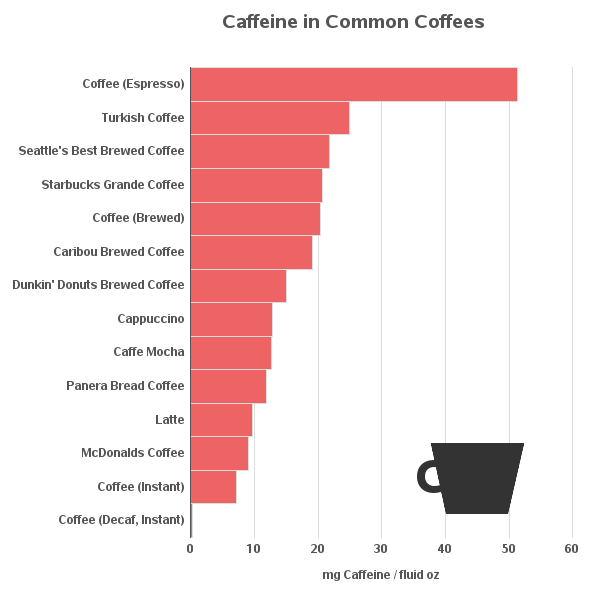
Credit: blogs.sas.com
Low-caffeine Beans
For those who love coffee but want to limit their caffeine intake, low-caffeine beans are a great option. These beans offer the rich flavors of coffee with less of the stimulant effect. Different varieties and growing regions contribute to the lower caffeine content in these beans.
Specialty Varieties
Some coffee beans naturally have less caffeine. These specialty varieties are perfect for those seeking a milder coffee experience. Here are a few notable low-caffeine coffee beans:
-
Arabica Beans: Generally contain less caffeine than Robusta beans. They have a smoother, sweeter taste.
-
Laurina (Bourbon Pointu): Known for its low caffeine content, Laurina beans have a delicate flavor profile.
-
Excelsa: Part of the Liberica family, these beans have a unique, tart flavor and less caffeine.
Arabica beans are the most popular and widely available. They typically contain about 50% less caffeine than Robusta beans. Laurina beans stand out due to their very low caffeine levels and are often sought after by specialty coffee enthusiasts. Excelsa beans, though less common, offer a distinctive taste and a lower caffeine kick.
|
Bean Variety |
Caffeine Content (mg/100g) |
|---|---|
|
Arabica |
60-80 |
|
Laurina |
20-30 |
|
Excelsa |
70-90 |
Growing Regions
The region where coffee is grown plays a significant role in its caffeine content. Different climates and altitudes affect how much caffeine a coffee plant produces. Some key regions known for low-caffeine beans include:
-
South America: Countries like Brazil and Colombia produce Arabica beans with moderate caffeine levels.
-
Central America: Regions such as Costa Rica and Guatemala are famous for their high-quality, low-caffeine Arabica beans.
-
Yemen: Known for its unique flavor profile, Yemeni coffee often has lower caffeine levels.
In South America, Brazil is the largest producer of Arabica beans. The lower altitude and consistent climate contribute to their moderate caffeine content. Central American countries, like Costa Rica and Guatemala, grow beans at higher altitudes. This results in a smoother taste and lower caffeine levels.
Yemen, with its arid climate, produces coffee beans with a unique flavor and lower caffeine content. The beans from this region are often sun-dried, adding to their distinct taste.
|
Region |
Average Altitude (meters) |
Common Bean Type |
|---|---|---|
|
Brazil |
400-1600 |
Arabica |
|
Costa Rica |
1200-1700 |
Arabica |
|
Yemen |
1000-2500 |
Arabica |
Coffee Blends
Finding the right coffee blend can be a delightful journey. For those seeking low-caffeine options, the variety of coffee blends available can be both exciting and overwhelming. Coffee blends combine different types of beans, offering unique flavors and caffeine levels. Understanding which blends offer less caffeine can help you enjoy your coffee without the jitters.
Low-caffeine Blends
Low-caffeine blends are perfect for those who love coffee but want to limit their caffeine intake. These blends often combine beans that naturally contain less caffeine. Here are some popular low-caffeine blends:
-
Half-Caff Blend: This blend mixes regular beans with decaffeinated ones. It cuts the caffeine content by about 50% while maintaining a robust flavor.
-
Mellow Blend: Typically made with beans like Brazilian Santos, which have lower caffeine content. It’s smooth and less likely to cause jitters.
-
Evening Blend: Crafted for late-day coffee drinkers. It combines low-caffeine beans to avoid sleepless nights.
Here is a comparison table of popular low-caffeine blends:
|
Blend Name |
Average Caffeine Content (mg per 8oz) |
Flavor Profile |
|---|---|---|
|
Half-Caff Blend |
40-50 mg |
Bold, full-bodied |
|
Mellow Blend |
30-40 mg |
Light, smooth |
|
Evening Blend |
20-30 mg |
Mild, balanced |
Mixing Techniques
Mixing techniques play a crucial role in creating low-caffeine coffee blends. By combining different beans, you can adjust the caffeine levels without sacrificing flavor. Here are some effective mixing techniques:
-
Blend with Decaf Beans: Mixing regular beans with decaf beans is the most common method. For example, a 50/50 mix of regular and decaf results in a blend with half the caffeine.
-
Use Naturally Low-Caffeine Beans: Some beans, like Arabica, naturally contain less caffeine. Combining these with other low-caffeine beans creates a gentle blend.
-
Proportion Control: Adjust the ratio of different beans. For instance, using a higher proportion of low-caffeine beans in the mix can further reduce caffeine content.
These techniques can help you find the perfect balance. You can enjoy a flavorful cup of coffee without the high caffeine content. Experimenting with different beans and ratios can lead to discovering your ideal blend.

Credit: www.reddit.com
Health Considerations
Choosing the right coffee involves more than just flavor. It’s essential to consider the caffeine content, especially for those concerned about health. Understanding the caffeine levels in different types of coffee can help you make informed decisions. This section discusses the health considerations related to caffeine intake.
Caffeine Sensitivity
Some individuals are more sensitive to caffeine than others. Caffeine sensitivity can cause various symptoms, including:
-
Increased heart rate
-
Insomnia
-
Anxiety
-
Digestive issues
Those with high caffeine sensitivity should choose coffee with lower caffeine content. Here are some options:
|
Type of Coffee |
Caffeine Content (per 8 oz) |
|---|---|
|
Decaf Coffee |
2-5 mg |
|
Light Roast Coffee |
60-80 mg |
|
Dark Roast Coffee |
50-70 mg |
Decaf coffee is the best option for those highly sensitive to caffeine. It contains only a small amount of caffeine, usually between 2 to 5 mg per cup. Dark roast coffee is another good choice. Despite its strong flavor, it often has less caffeine than light roast coffee.
Remember, individual reactions to caffeine can vary. Always monitor how your body responds to different types of coffee.
Recommended Intakes
Understanding the recommended caffeine intakes is crucial for maintaining good health. The general guidelines suggest:
-
Healthy adults should limit their caffeine intake to 400 mg per day.
-
Pregnant women should consume no more than 200 mg per day.
-
Children and adolescents should have even lower limits, around 100 mg per day.
This means you can enjoy about 4 cups of regular coffee per day. Pregnant women should be more cautious, sticking to 1 to 2 cups. For children, it’s best to limit coffee and opt for other beverages.
Below is a quick reference table:
|
Group |
Recommended Daily Intake |
|---|---|
|
Healthy Adults |
400 mg |
|
Pregnant Women |
200 mg |
|
Children |
100 mg |
Keeping track of your caffeine intake helps prevent potential health issues. If you experience negative effects from caffeine, consider reducing your intake or opting for decaf options.
By understanding caffeine sensitivity and recommended intakes, you can make better choices about your coffee consumption. Stay informed and enjoy your coffee responsibly.
Taste Profiles
When exploring which coffee has the least caffeine, understanding taste profiles is essential. Each type of coffee offers a unique flavor experience. The caffeine content can affect the taste, but it’s not the only factor. Let’s dive into the flavor profiles of low-caffeine coffees.
Flavor Vs Caffeine
Many believe that low-caffeine coffee lacks flavor. This is not always true. The flavor of coffee depends on various factors, including the bean type, roast level, and brewing method. Here are some key points:
-
Bean Type: Arabica beans generally have less caffeine than Robusta beans. Arabica beans offer a smoother, sweeter taste, while Robusta beans are more bitter and strong.
-
Roast Level: Dark roasts have slightly less caffeine than light roasts. The roasting process burns off some caffeine, but it also changes the flavor. Dark roasts are bold and rich, while light roasts are more acidic and fruity.
-
Brewing Method: The way you brew your coffee affects both the caffeine content and the flavor. For example, espresso has less caffeine per serving than drip coffee, but it is more concentrated and robust in flavor.
Let’s look at a table comparing some popular low-caffeine coffee options:
|
Coffee Type |
Flavor Profile |
Caffeine Content (mg per 8 oz) |
|---|---|---|
|
Decaf Coffee |
Mild, slightly nutty |
2-5 mg |
|
Half-Caff Coffee |
Balanced, smooth |
50-60 mg |
|
Arabica Coffee |
Sweet, fruity |
85-100 mg |
Brewing Tips
To get the best flavor from your low-caffeine coffee, follow these brewing tips:
-
Use Fresh Beans: Freshly roasted beans have the best flavor. Buy small batches to ensure freshness.
-
Grind Just Before Brewing: Grinding coffee just before brewing preserves its flavor. Use a burr grinder for even grind size.
-
Water Temperature: Brew with water between 195°F and 205°F. Too hot or too cold water can ruin the flavor.
-
Proper Ratio: Use the right coffee-to-water ratio. A common ratio is 1:15 (1 gram of coffee for every 15 grams of water).
-
Brewing Time: Adjust brewing time based on your method. For example, drip coffee takes about 4-5 minutes, while espresso takes 25-30 seconds.
Here is a quick reference for brewing different types of low-caffeine coffee:
|
Brewing Method |
Recommended Brewing Time |
Flavor Outcome |
|---|---|---|
|
Drip Coffee |
4-5 minutes |
Balanced, smooth |
|
French Press |
4 minutes |
Rich, full-bodied |
|
Espresso |
25-30 seconds |
Bold, concentrated |
Experiment with these tips to find your perfect cup of low-caffeine coffee. Enjoy the journey of discovering new flavors and aromas.

Credit: bhbcoffee.com
Popular Low-caffeine Options
For many coffee lovers, the level of caffeine in their cup of joe is a crucial factor. Whether it’s to reduce jitters or ensure a good night’s sleep, opting for low-caffeine coffee can be a smart choice. In this blog post, we explore popular low-caffeine options. These choices keep you energized without overloading on caffeine.
Consumer Favorites
Many coffee enthusiasts prefer low-caffeine options for various reasons. Here are some popular choices:
-
Half-Caf Coffee: This blend mixes regular and decaf beans, providing a balanced caffeine level. It’s perfect for those who want a mild kick without the jitters.
-
Decaf Coffee: Made from beans with 97% of the caffeine removed, decaf is ideal for caffeine-sensitive individuals. It offers the taste of regular coffee without the buzz.
-
Single-Origin Light Roast: Light roast coffee from specific regions often has lower caffeine levels compared to dark roasts. These coffees preserve the natural flavors of the beans.
Below is a table summarizing the caffeine content in these popular options:
|
Coffee Type |
Caffeine Content (mg per 8 oz) |
|---|---|
|
Half-Caf Coffee |
50-70 |
|
Decaf Coffee |
2-5 |
|
Single-Origin Light Roast |
60-80 |
These options are great for those who enjoy coffee but need to manage their caffeine intake. They offer a range of flavors and strengths, catering to different preferences and needs.
Global Trends
Low-caffeine coffee options are gaining popularity worldwide. Here are some global trends:
-
Europe: In countries like Italy and France, decaf espresso is becoming more common. People enjoy the strong flavor without the high caffeine content.
-
Asia: Japan and South Korea are seeing a rise in low-caffeine beverages. Cold brew and iced decaf coffee are particularly popular among younger consumers.
-
North America: The United States and Canada have seen an increase in half-caf and decaf coffee sales. Health-conscious consumers are driving this trend.
Here’s a quick look at the popularity of low-caffeine options in different regions:
|
Region |
Popular Low-Caffeine Option |
|---|---|
|
Europe |
Decaf Espresso |
|
Asia |
Cold Brew Decaf |
|
North America |
Half-Caf Coffee |
These trends highlight a global shift towards healthier coffee choices. Consumers are becoming more aware of their caffeine consumption and seeking alternatives that fit their lifestyles.
Frequently Asked Questions
Which Type Of Coffee Drink Has The Least Caffeine?
Decaffeinated coffee has the least caffeine. It typically contains about 2-5 milligrams per 8-ounce cup.
Which Coffee Is Naturally Low In Caffeine?
Decaffeinated coffee is naturally low in caffeine. Additionally, certain coffee varieties like Arabica have lower caffeine content compared to Robusta.
What Is The Weakest Coffee To Drink?
The weakest coffee to drink is a light roast. It has a milder flavor and lower caffeine content.
Which Coffee Method Has The Least Caffeine?
The coffee method with the least caffeine is decaffeinated coffee. It contains only about 2-5 milligrams of caffeine per cup.
Conclusion
Choosing the right coffee means considering caffeine content. Decaf coffee has the least caffeine. It’s ideal for those sensitive to caffeine. Light roasts have more caffeine than dark ones. Opt for decaf or dark roast for less caffeine. Always check labels for exact caffeine amounts.
Enjoy your coffee with less worry. Your perfect cup awaits!
